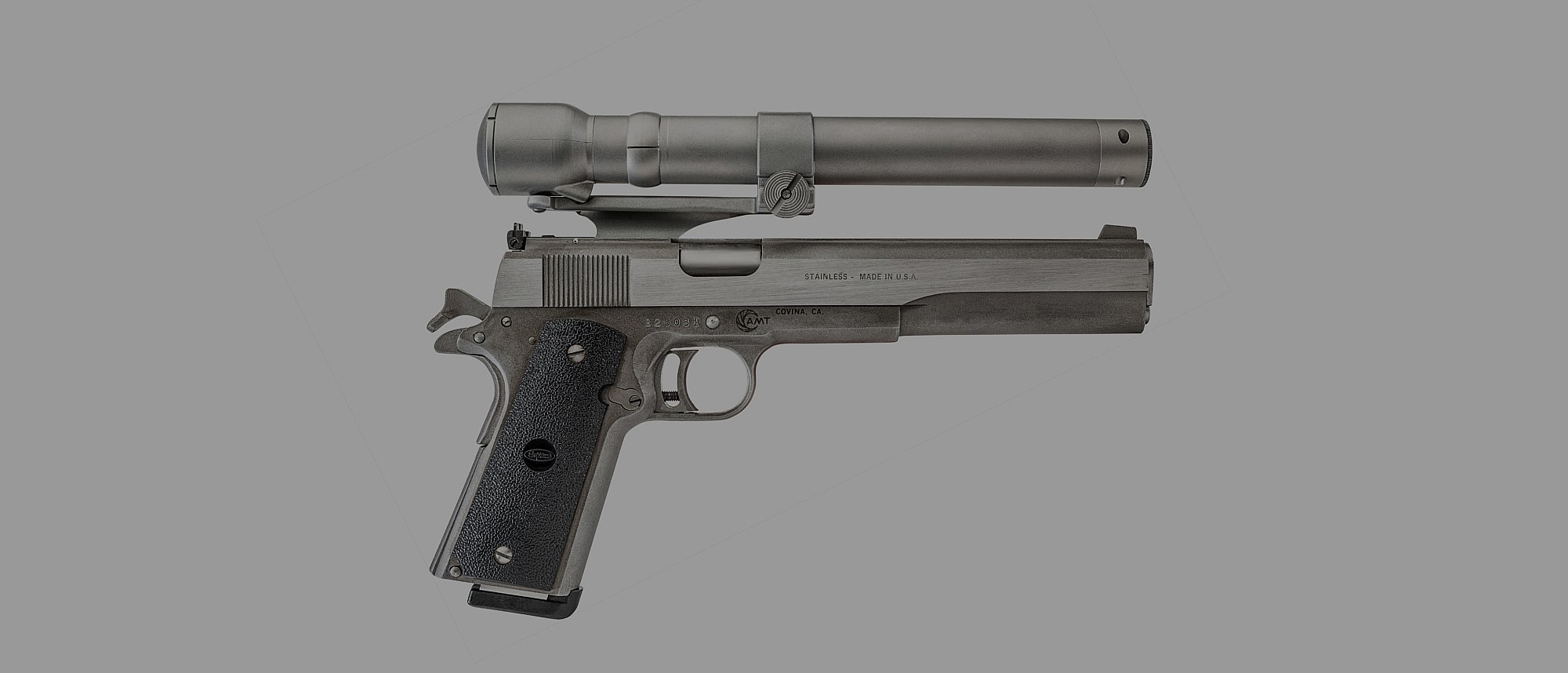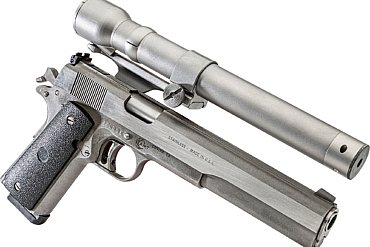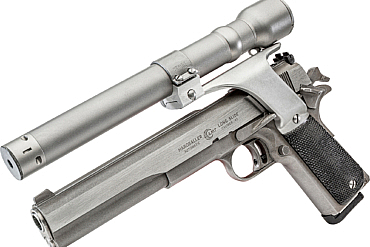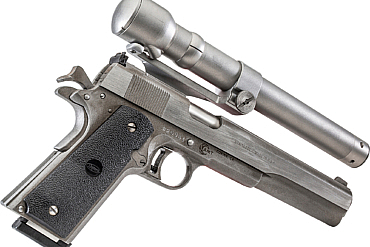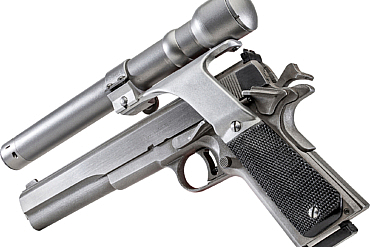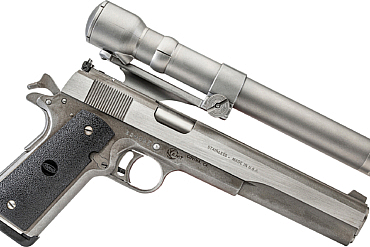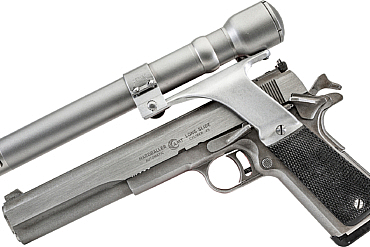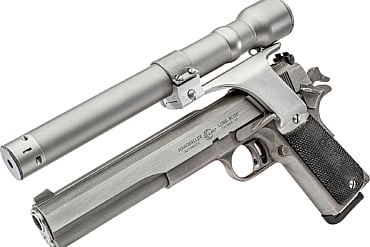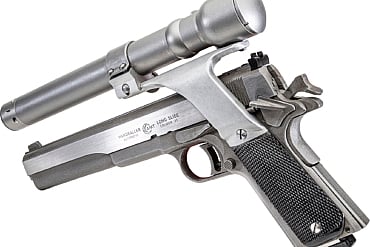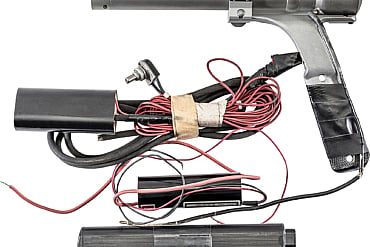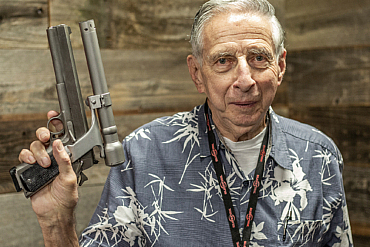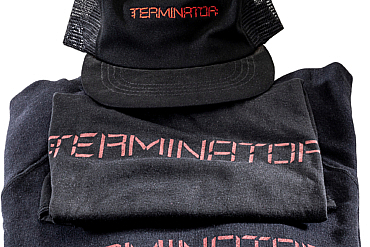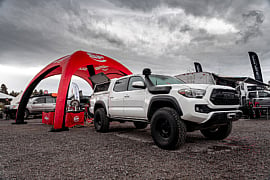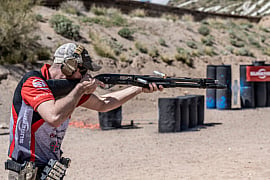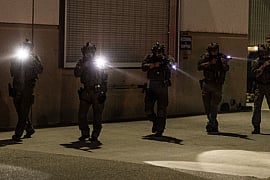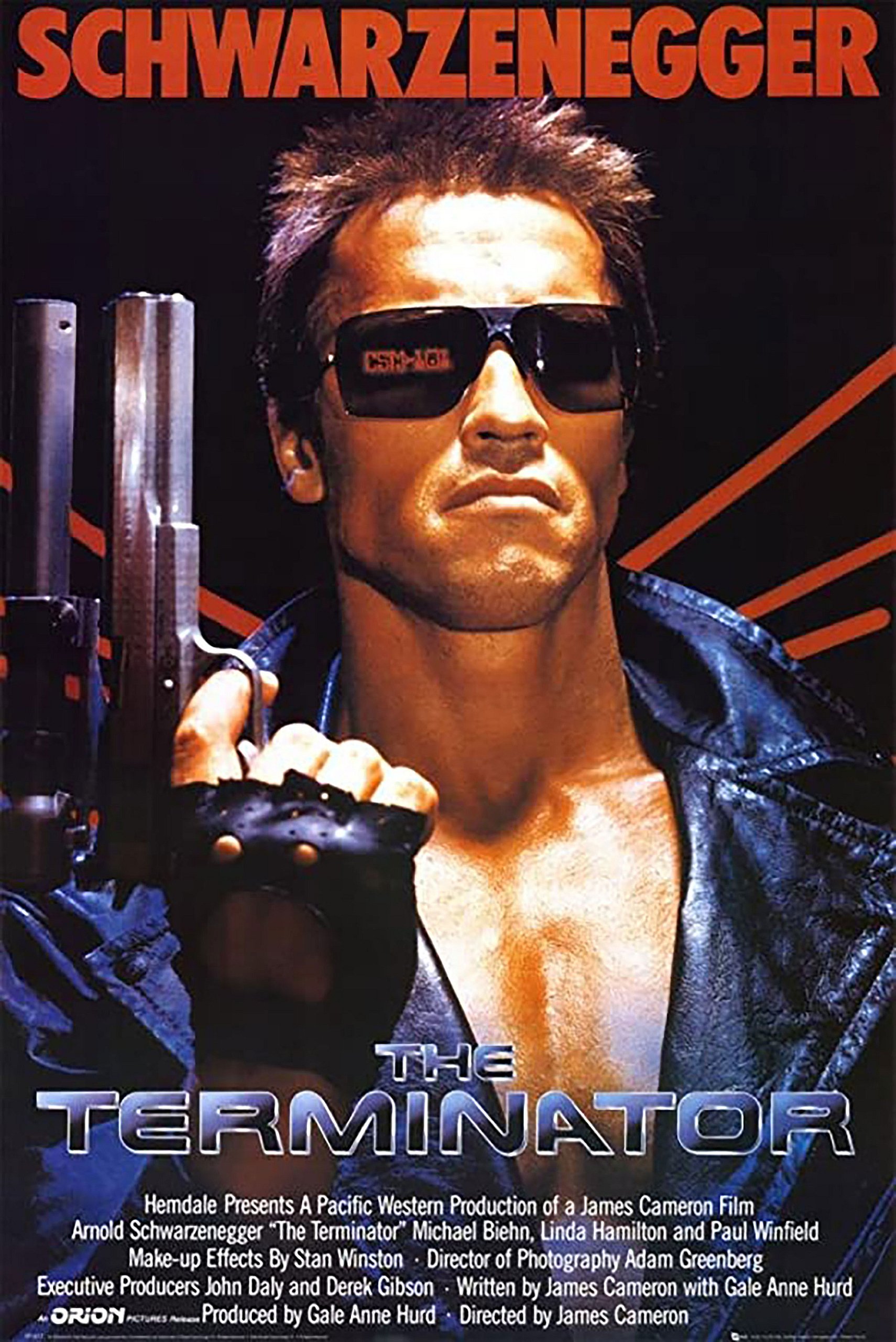
The leather-jacketed Terminator enters the Alamo Sport Shop on Victory Boulevard in Van Nuys, California, searching for the necessary tools to accomplish his mission. Walking to the gun counter, he requests to see a 12-gauge auto-loading shotgun.
Salesman
That’s Italian. You can go pump or auto.
Terminator
The .45 Longslide with laser sighting.
Salesman
These are new. We just got them in. That’s a good gun. Just touch the trigger, the beam comes on, and you put the red dot where you want the bullet to go. You can’t miss.
Face it, there aren’t too many Hollywood weapons—real or imagined—that can match the appeal of the laser-aimed handgun in the iconic 1984 film, The Terminator. Maybe the Star Wars lightsaber. Dirty Harry’s .44 Magnum. Just about anything used in the John Wick series.
But no matter what you put up against it, the laser-sighted .45 used by Arnold Schwarzenegger in The Terminator is a cinematic legend. It deserves its rightful place in the pantheon of classic Hollywood movie weapons. Funny thing is, as fantastically far out and futuristic as it seemed at the time, the Terminator laser was already the real deal, a true-to-life functional product devised by Ed Reynolds, one of the three men who possessed the innovative thinking that has fueled SureFire since its founding.
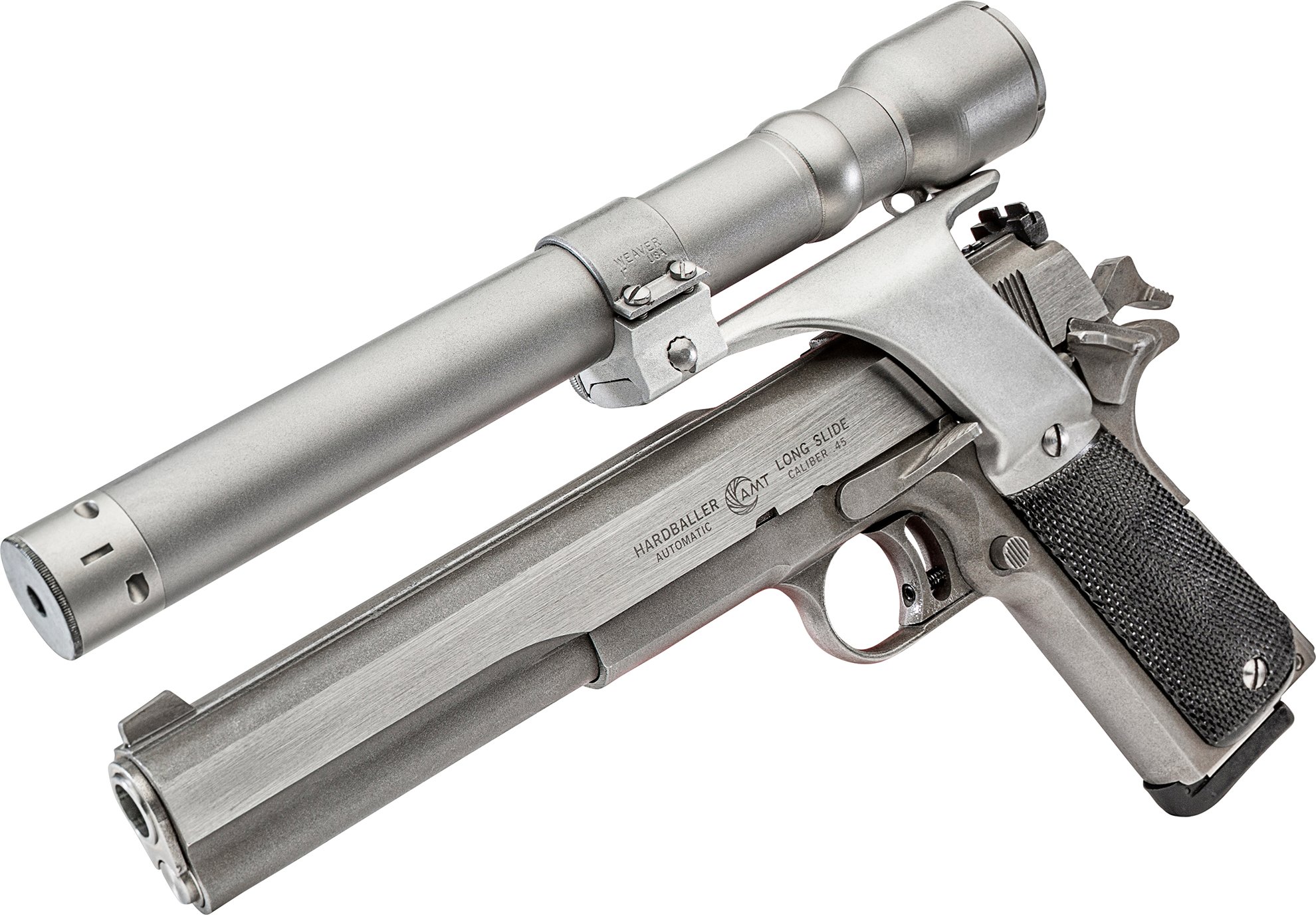
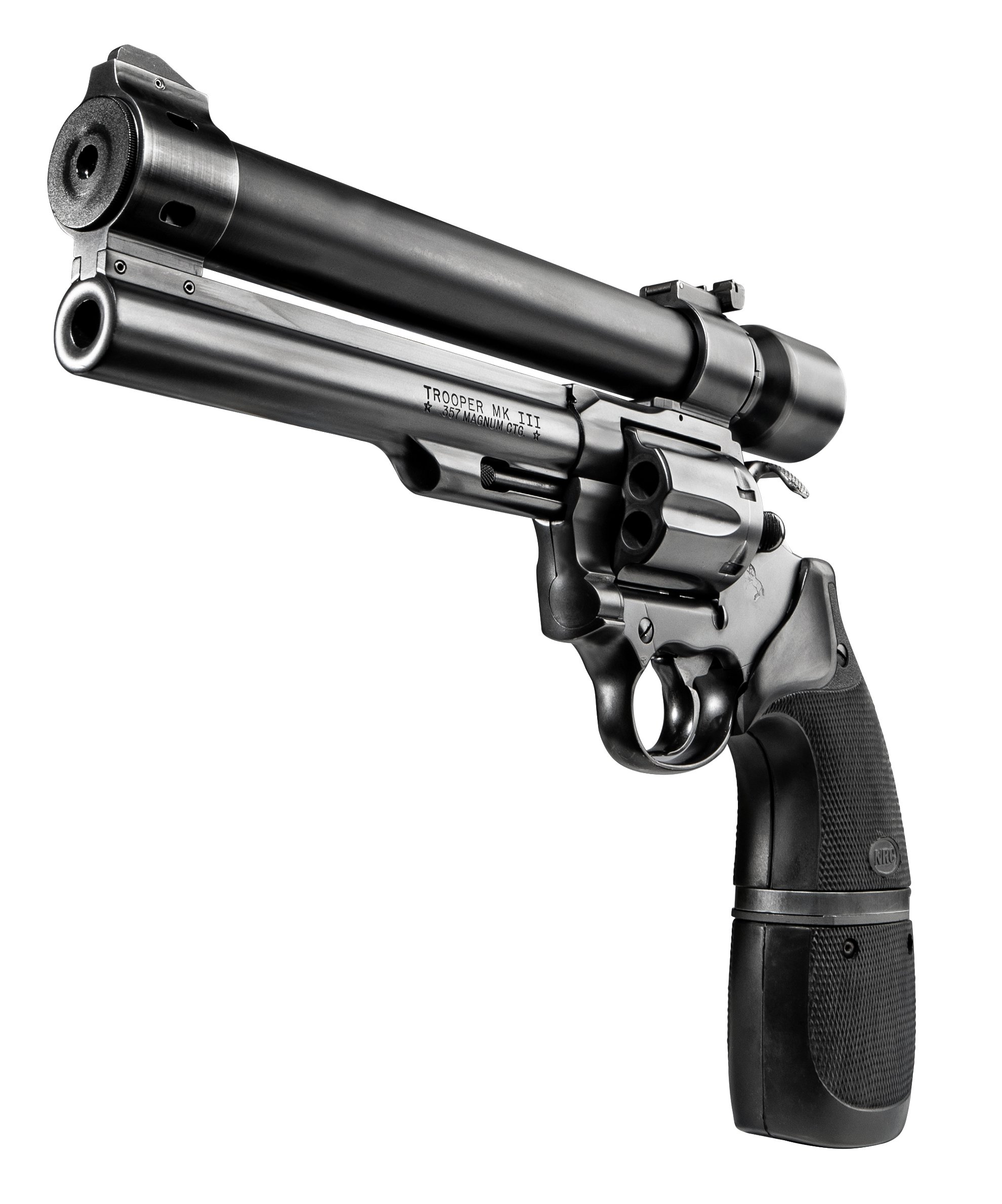
But here’s the back story: Before changing its name, SureFire was known as Laser Products Corporation [LPC]. Founded in October of 1979, Laser Products pioneered the first commercial laser-aiming sight, and it, too, was used on a handgun, the LPC Model 7. The host weapon, a Colt Trooper .357 Magnum, was integrated with a sizeable helium-neon gas laser fueled by a large, Ni-Cad battery pack located in the gun’s custom Pachmayr grip. Once zeroed, the Model 7 provided unprecedented speed and accuracy when acquiring a target by allowing the shooter to see the exact impact point of each shot without having to acquire it by using the gun’s conventional iron sights.
Fast forward to the early 1980s, when Laser Products supplied the Los Angeles Police Department and Los Angeles County Sheriffs with shotgun laser aiming devices for these agencies’ anti-terrorist units. Later carried by officers during the 1984 Summer Olympics, those lasers had already caught the eye of a Hollywood prop master working on a science-fiction film. The plot involved a cyborg sent back in time to alter the course of history by eliminating the mother of the yet unborn leader of the human resistance in a future where machines have taken over the planet.
Reynolds, the current V.P. of Corporate Services at SureFire, is just shy of his 90th birthday, yet his analytical mind and memory are as sharp today as they were in 1983 when he received the call to create the weapon for the film.
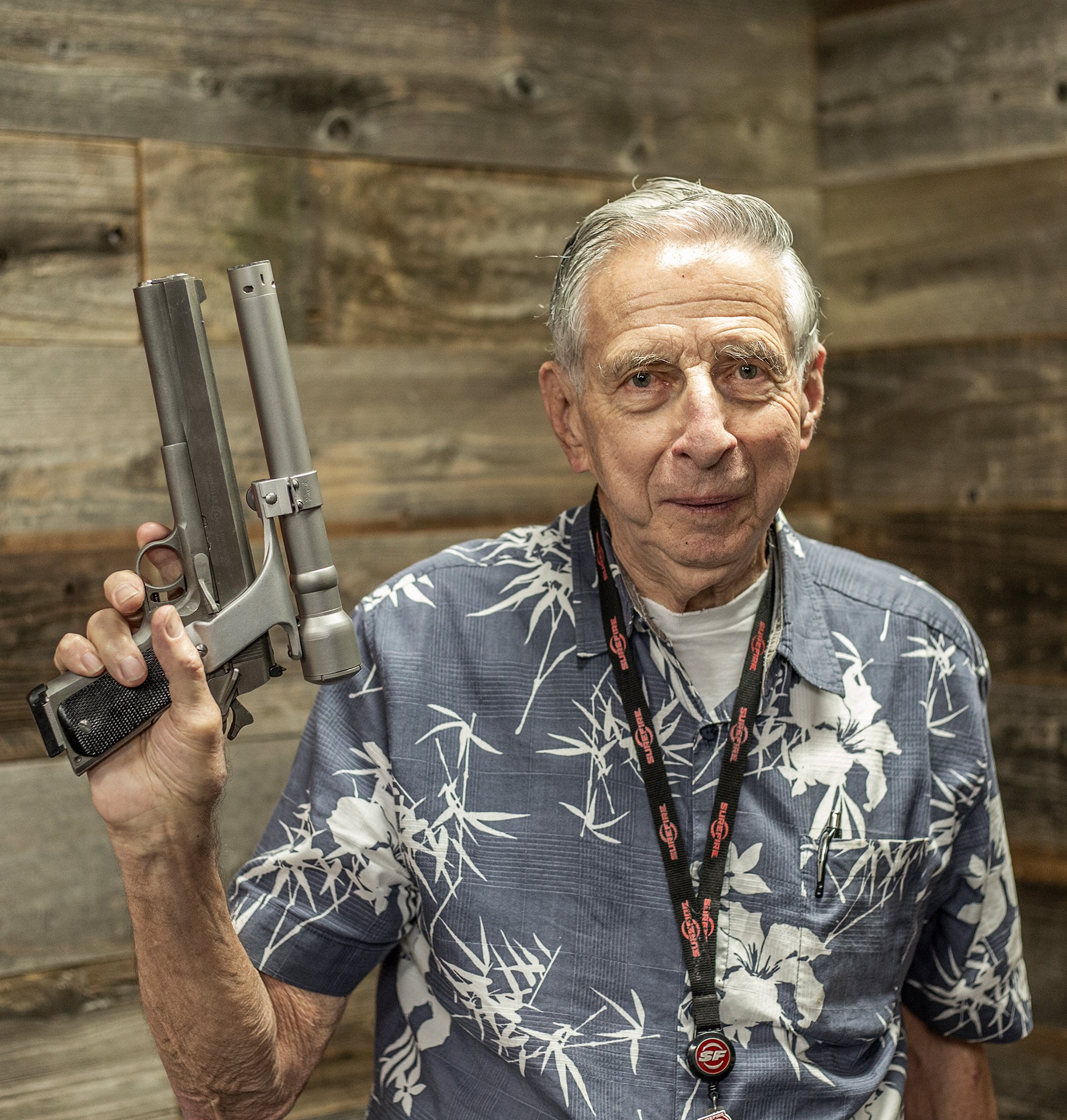
“A company called Hemdale [Film Corporation] came along and said, ‘We’ll give you the gun, and you put the laser on it,'” Reynolds recalls. “They provided the AMT Hardballer .45 Long Slide. Our Colt Trooper .357 had the same laser configuration, so I took one of those and created a housing for it. I took a standard, off-the-shelf gun mount for a scope, modified that, and we had a product. The only thing I got out of it was the advertising, a hat, a t-shirt, and a sweatshirt.”
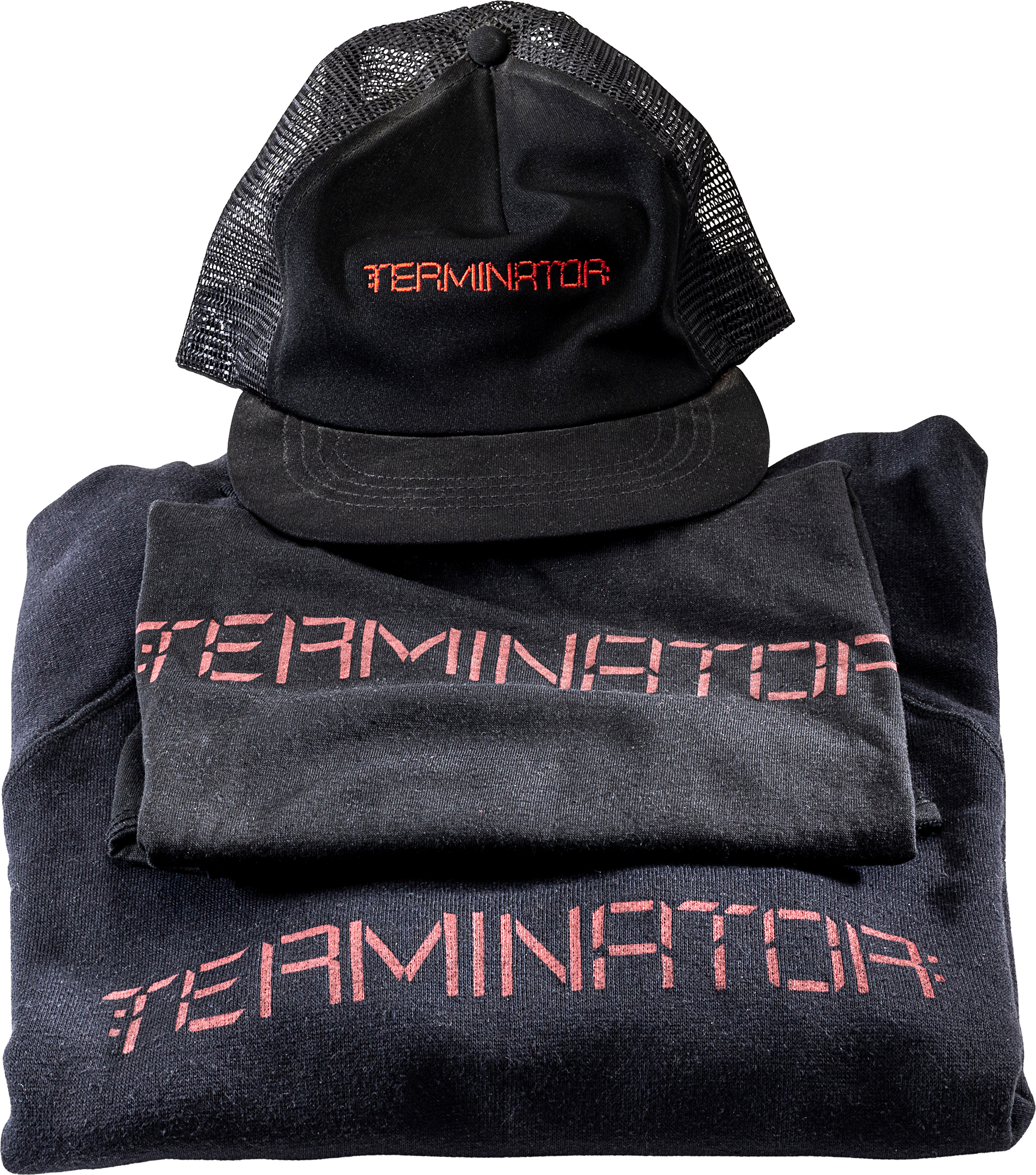
Using the same AMT Hardballer, Reynolds built two outwardly identical versions of the laser for the film. The first was just for show; it wasn’t functional. Reynolds says it’s depicted in the Terminator movie poster artwork. The second was the real deal, a fully functional model that used state-of-the-art LPC technology. It appears in the fateful scene where the Terminator finally catches up to Sarah Conner at the Tech Noir nightclub.
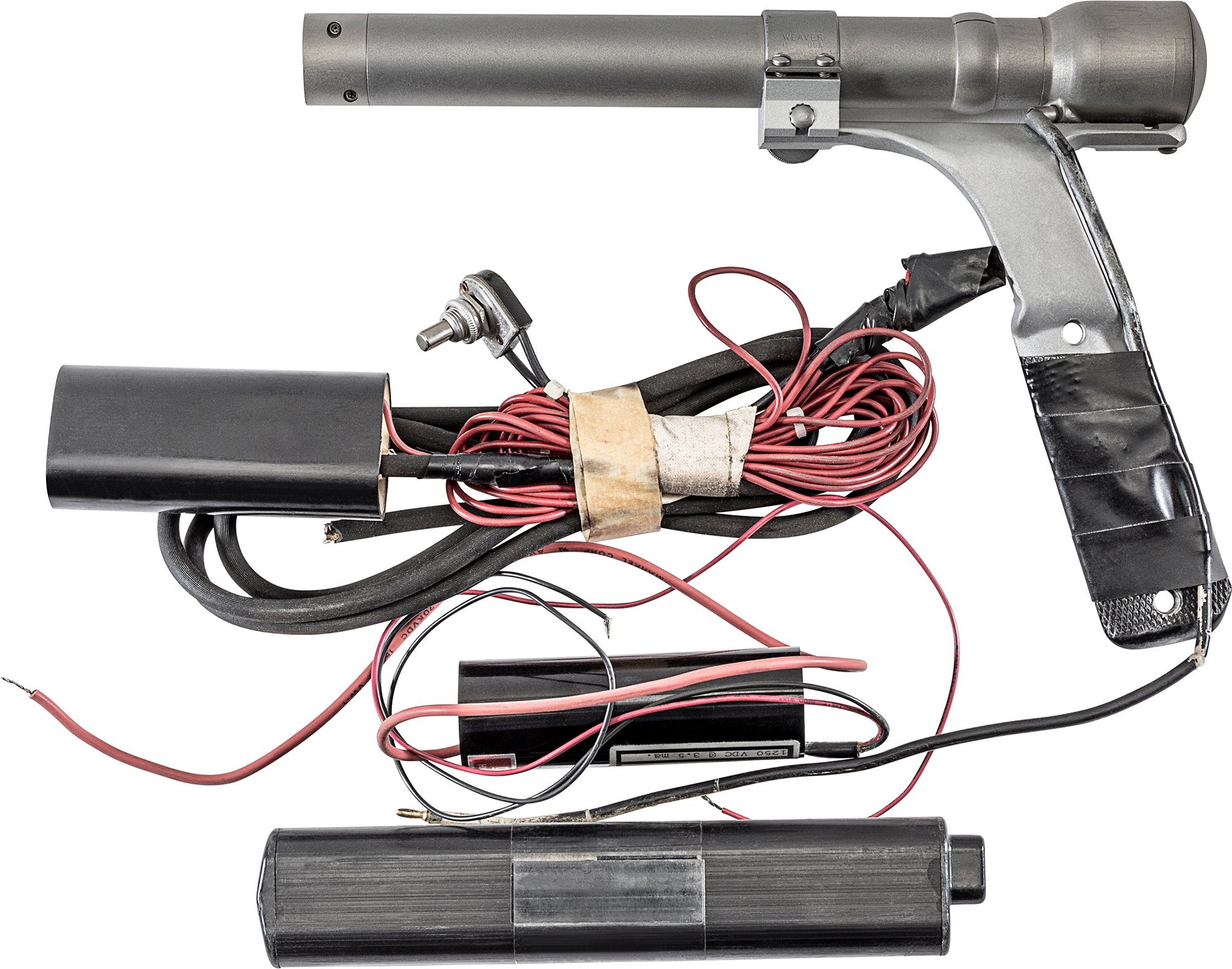
“We used a 10,000-volt power supply,” Reynolds says. “It was cylindrical, about an inch and a half in diameter and about 4 inches long. You’d put 12 volts in on one end, and at the other end, you’d get 10,000 volts out. That would ignite the helium-neon in the tube, and it would lase. We ran a long cable to the power supply, which would be in his jacket pocket. Another cable went to a battery and continued to a switch. This was all buried in his clothing. He could point the gun with his right hand and turn the laser on with his left finger. It was cobbled together. It didn’t look pretty. But that’s the way Hollywood is. You don’t see it. It’s a big illusion.”
While 10,000 volts may sound like enough to fry a cyborg in the event of a malfunction, Reynolds says that the system never put the actor in any real danger.
“When it’s 10,000, it’s in micro-amps,” Reynolds says. “It wouldn’t kill you, but it would knock you on your butt. It wasn’t fun. I’d been bitten by it more than once because all our early products used that same voltage. Once it ignited, the voltage dropped from 10,000 volts to 1,000 volts.”
Now recall that tense, slow-motion scene in the nightclub. When the cyborg aims the AMT Hardballer at Sarah Connor’s head, the laser beam you see is the actual beam emitting from the fully functional LPC laser. That’s exactly how it performed in the real world, no Hollywood illusion necessary. It’s one of those moments in movie history that captured the imagination of millions who’ve seen it, and today the Terminator’s laser-aimed handgun still resonates with sci-fi movie fans and firearms enthusiasts alike. Numerous stories have been written about the weapon, and some fans have even tried to recreate it. One airsoft company even sells a complete replica. There’s simply no doubting the original weapon’s appeal…and yet the man who designed it doesn’t think it’s anything special.
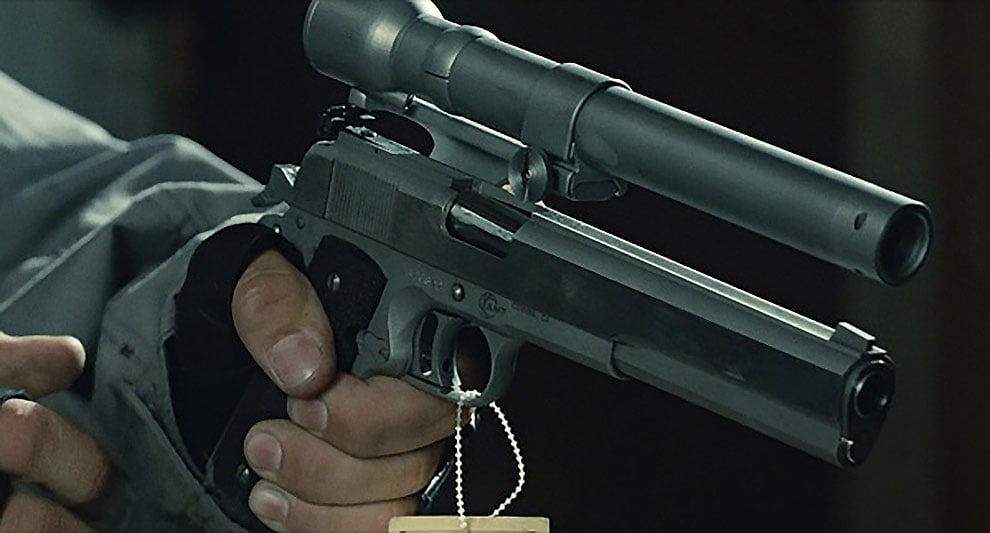 “It didn’t really change our fortunes at all,” Reynolds recounts. “We were pushing a rock uphill at that time, really. We’d made lasers for handguns, rifles, MP5s and HK94s, and such. They were big and clumsy. It was just fortunate that I came up with the idea of putting an incandescent-type lamp on a gun. I’m prouder of the two patents I have for being the first person to put a subminiature light on a handgun and on a long gun. That made a difference.”
“It didn’t really change our fortunes at all,” Reynolds recounts. “We were pushing a rock uphill at that time, really. We’d made lasers for handguns, rifles, MP5s and HK94s, and such. They were big and clumsy. It was just fortunate that I came up with the idea of putting an incandescent-type lamp on a gun. I’m prouder of the two patents I have for being the first person to put a subminiature light on a handgun and on a long gun. That made a difference.”
That said, SureFire continues to advance laser technology today. Numerous options—including infrared lasers—are available on several SureFire WeaponLight models. These solid-state laser units are compact to the point of being practically inconspicuous. Comparing them to the gas laser on the Terminator gun is akin to comparing the capability of the average iPhone against an original Motorola Dynatac.
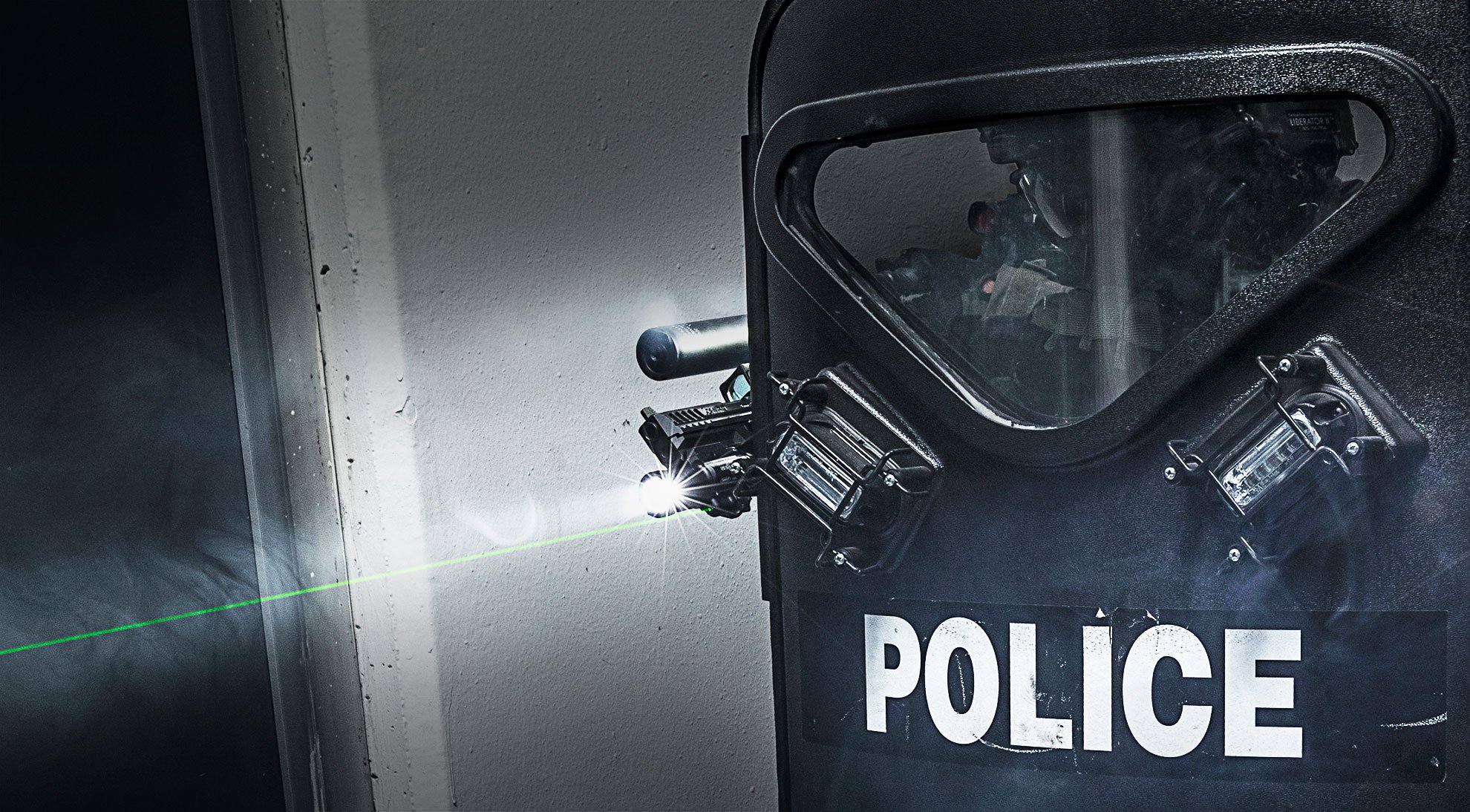
“The green lasers we make today are so much better,” Reynolds says. SureFire’s X400U, X400T, X400UH MasterFire, XH50 MasterFire, and XC2 handgun WeaponLight models even offer a green laser option in addition to the traditional red laser. Of course, many companies have copied SureFire’s pioneering technology. People around the globe think nothing of the laser pointers they use in everyday business presentations. Consumer lasers are used in a myriad of products. Still, The Terminator laser remains etched in our collective memory.
But just what became of the original lasers used in The Terminator? Reynolds still has both of them. They’re tucked away in a secure location that’s considered “need to know.”
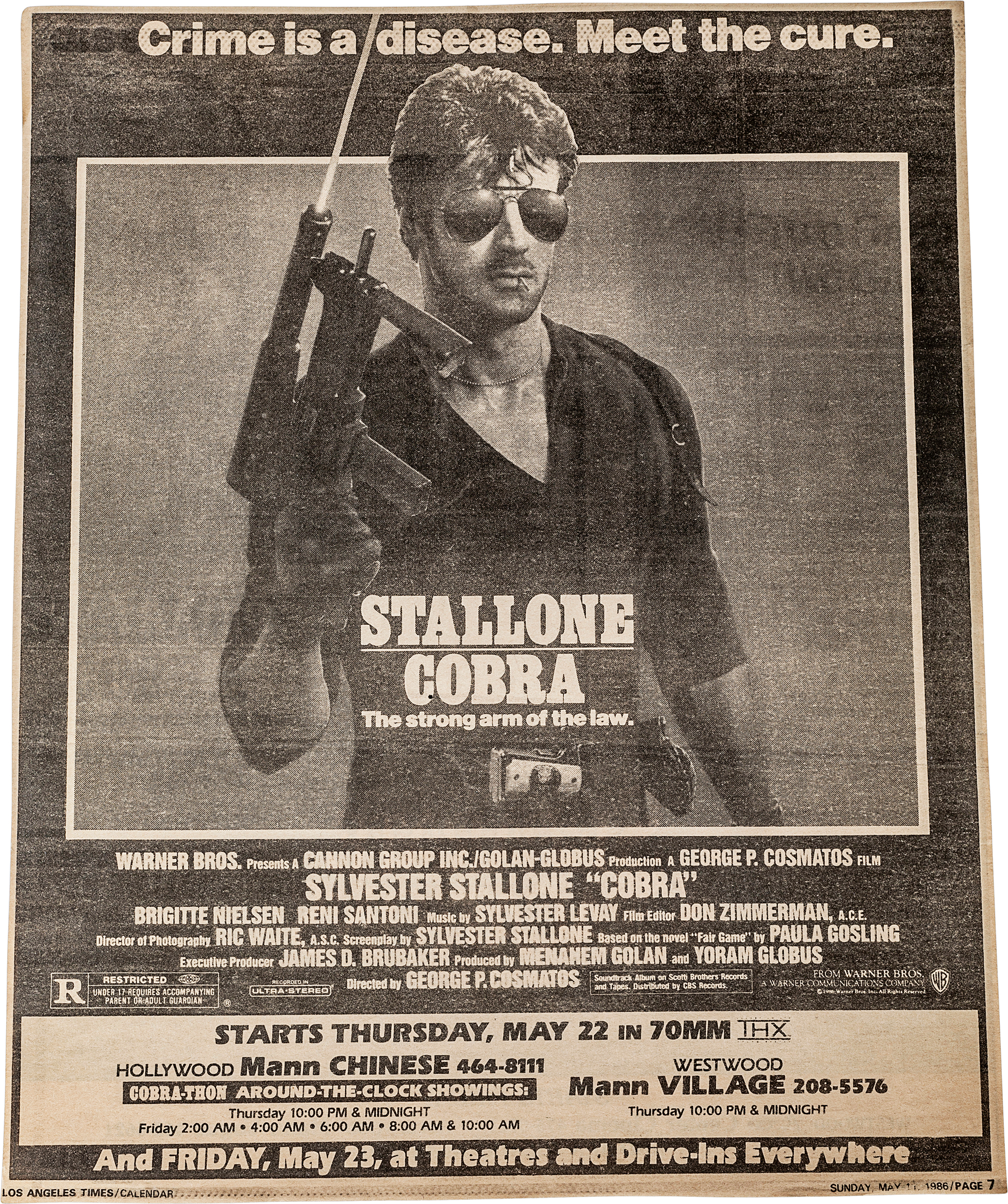
“The prop house owned the gun, and when it was all through, they kept the gun but brought the lasers back to me,” Reynolds says. “So, I went out and bought an identical AMT Hardballer to mount one of them. It’s all locked in a vault today. Later on, I made a laser for another movie called Cobra [starring Sylvester Stallone]. They used a Finnish submachine gun [Jati], which was such a piece of junk it was scary. But that laser was also fully functional.”
Nowadays, SureFire products figure prominently in motion pictures and many television programs incorporating real-world law enforcement or military themes. At the time The Terminator was released, the LPC laser atop Schwarzenegger’s .45 was considered a novelty. Today it’s considered a cinematic legend, but it wasn’t just another Hollywood gimmick. It was true-to-life technology that had already proved itself in the real world.

